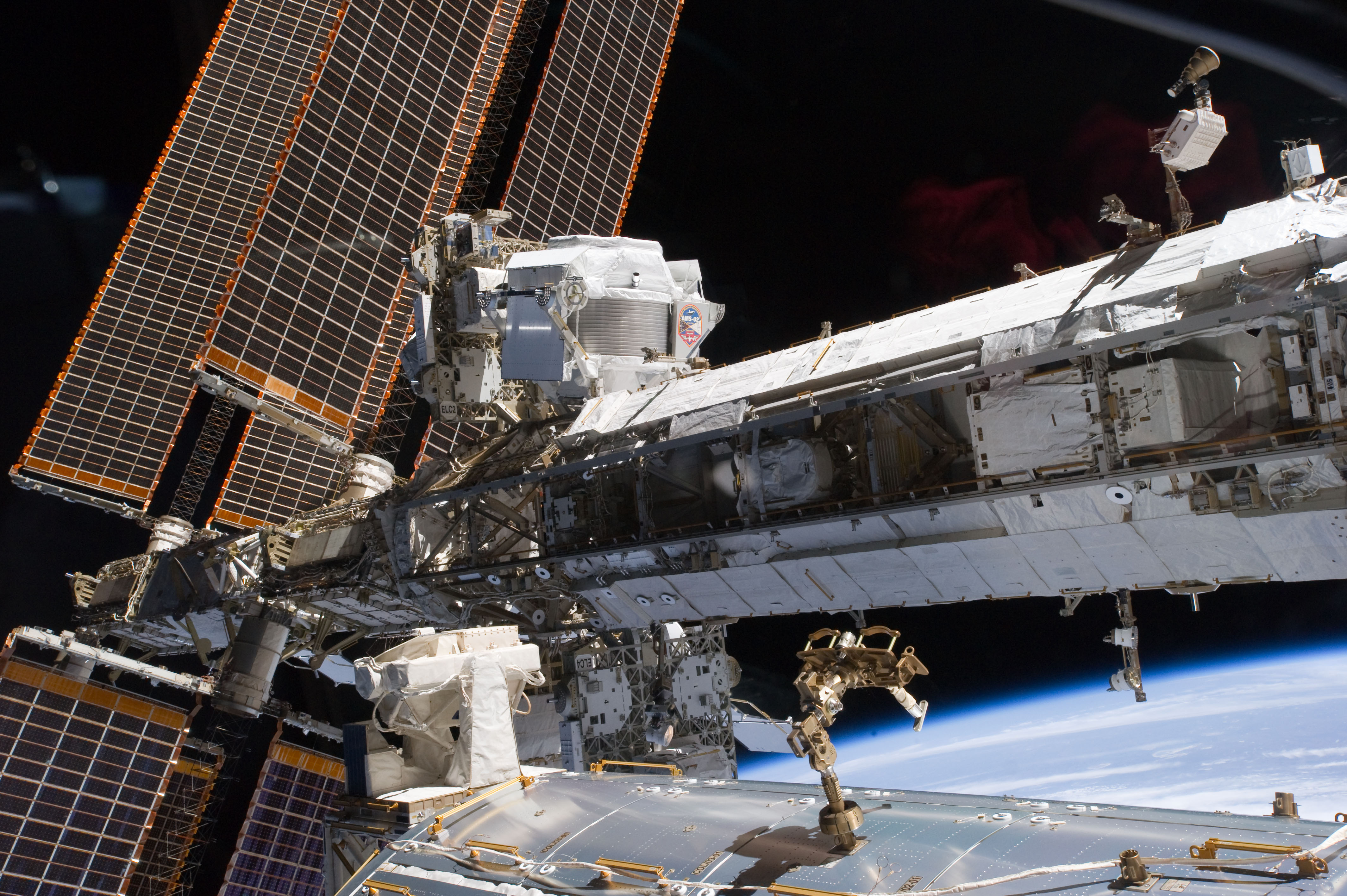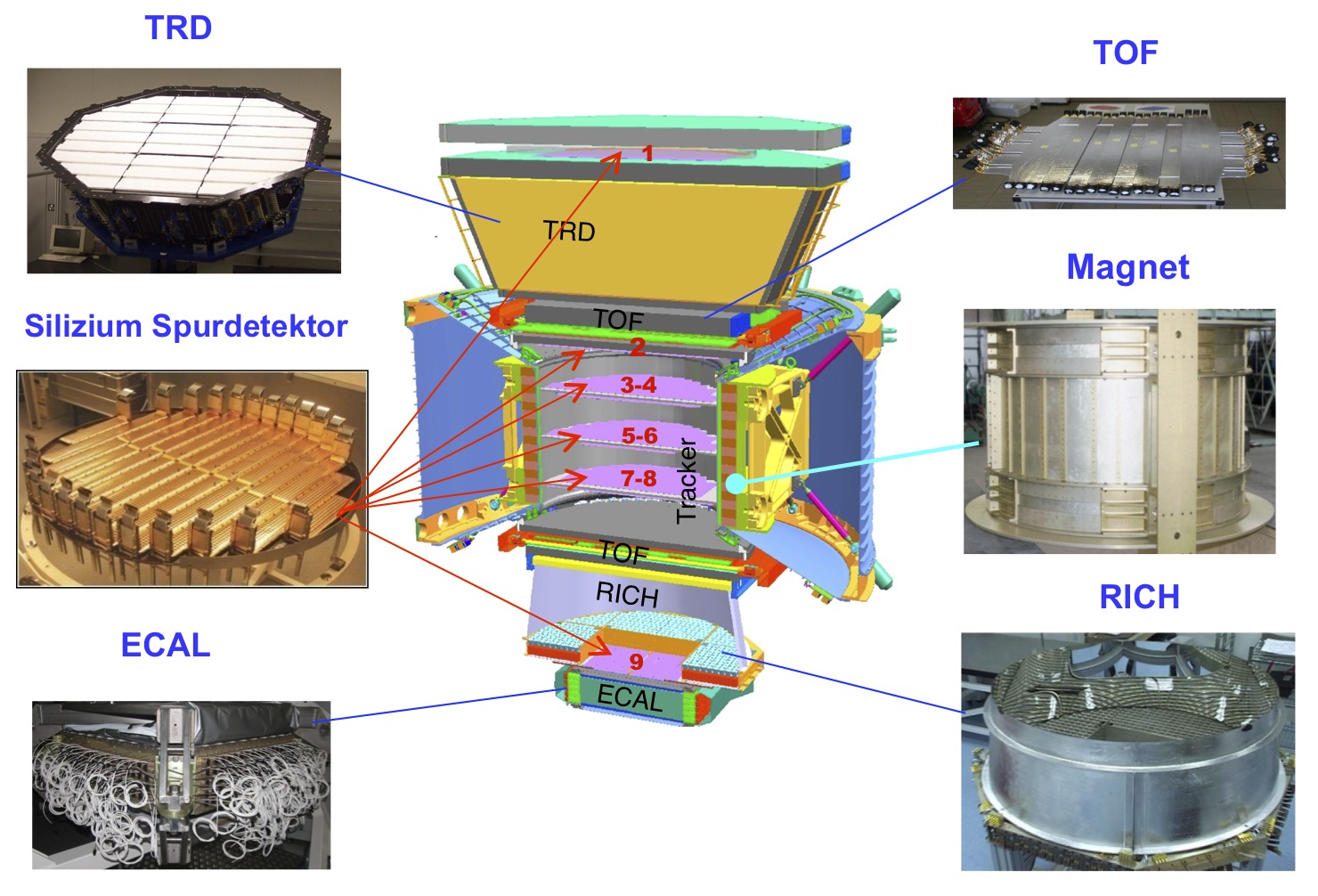AMS-02 Experiment on the ISS

Introduction
The Alpha Magnetic Spectrometer (AMS) is a detector designed for precision spectroscopy of cosmic rays in the GeV to TeV energy range. It was installed on the International Space Station (ISS) in May 2011. With dimensions of and a weight of 7.5 tons, AMS is the largest cosmic-ray spectrometer ever built. Its construction began in 1995, and a successful prototype flight (AMS-01) aboard the Space Shuttle Discovery proved the feasibility of the detector concept in 1998. Led by Nobel laureate Professor Samuel Ting from MIT, AMS has been constructed and is now operated by an international collaboration of more than 200 scientists and engineers, from Europe, America and Asia. The overall construction costs, including the flight of AMS to the Space Station aboard Space Shuttle Endeavour, have amounted to 1.5 billion US dollars. AMS is the only magnet spectrometer in space and the largest instrument for basic research on the ISS. Today, the Aachen group, comprising 20 scientists and students, plays a major role in the analysis of the data gathered by AMS and in the operation and calibration of the instrument.
Since their discovery in 1912, cosmic rays have held many surprises in stock for us, from the discovery of new elementary particles to the most violent processes taking place in the Universe and accelerating cosmic rays to enormous energies. As a multi-purpose instrument for the precision spectroscopy of cosmic rays, AMS was conceived to answer fundamental questions about our Universe: What is the nature of Dark Matter? What happened to the antimatter that must have been produced in the Big Bang? Where are cosmic rays accelerated and how do they propagate through the Milky Way? Answers to these questions will have a profound impact on our understanding about the inner workings of our Universe and help advance fundamental science.
Detector

AMS employs redundant subdetectors for particle identification and for energy or momentum measurements: a cylindrical permanent magnet of 0.15 Tesla and six subdetectors: a transition radiation detector (TRD), an electromagnetic calorimeter (ECAL), a ring-imaging Cherenkov counter (RICH), a silicon tracker, an anti-coincidence counter (ACC) and a time-of-flight system (TOF).
RWTH Aachen University has been strongly involved in the AMS project since its inception. The Transition Radiation Detector (TRD), the Anti-Coincidence Counter (ACC), and the Tracker Laser Alignment system (TAS) were developed and constructed in Aachen.
We are responsible for the continuous monitoring, operation and calibration of the TRD, ACC, and TAS detectors.
More information on AMS is found on the website of the AMS collaboration and the AMS website hosted by NASA.